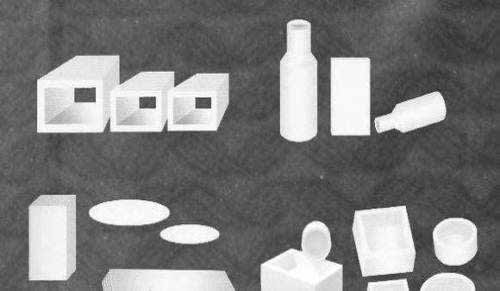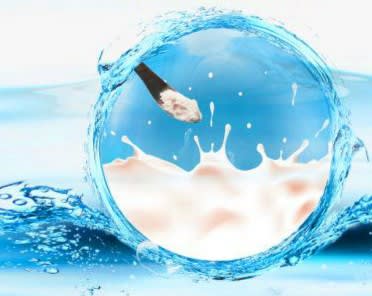Pt-Rh thermocouple is a very important temperature measuring element. It has the advantages of wide measuring range, convenient use, and high precision, so it is widely used in industry, agriculture, national defense and scientific research.
Pt-Rh thermocouples are widely used in various high-temperature furnaces and other heating equipment to detect or control temperature. They are precious metal materials. Correct use of platinum-rhodium thermocouple not only saves materials and funds for the country, but also obtains accurate temperature measurement. One of the main reasons for the errors of platinum-rhodium thermocouples is parasitic potential.

The basic structure of platinum-rhodium thermocouple:
The basic structure of Pt-Rh thermocouple for industrial temperature measurement includes thermocouple wire, insulating tube, the protective tube, and junction box.
Common platinum-rhodium thermocouple wires and their properties:
1. Platinum-rhodium 10-platinum thermocouple (scale S, also known as the single platinum-rhodium thermocouple) whose positive component is the platinum-rhodium alloy containing 10% rhodium.
Negative extremely pure platinum; its characteristics are:
(1) Thermoelectric properties are stable, anti-oxidation is strong, suitable for continuous use in the oxidizing atmosphere, long-term use temperature can reach 1300 C, over 1400 C, even in the air, pure platinum wire will recrystallize, making the grain coarse and fracture;
(2) High accuracy. It is the highest accuracy of all thermocouples and is usually used as a standard or for measuring higher temperatures.
Platinum-rhodium thermocouple is a common temperature measuring element in the temperature measuring instruments. It measures temperature directly, converts temperature signal into the thermoelectric potential signal, and converts temperature of the measured medium through the electrical instrument (secondary instrument). Installation methods of thermocouples are as follows: the main fixing methods are the threaded connection, flange connection, and welding. Their application occasions and requirements are different, mainly based on pressure, temperature and other parameters. So what aspects should we pay attention to when installing and using?
1. When using thermocouple compensating conductor, attention must be paid to the type matching, the polarity cannot be disconnected, and the temperature of the compensating conductor and the thermocouple connecting end cannot exceed 100 C.
2. When the temperature is measured or controlled by a thermocouple with a large time constant, the temperature shown by the instrument fluctuates very little, but the actual temperature of the furnace may fluctuate greatly. In order to measure temperature accurately, thermocouples with small time constants should be selected.
3. After power-on according to the instrument wiring diagram, the instrument first displays the thermocouple indexing number of the instrument, then displays the range of the instrument, and then measures the setting temperature of the digital tube display in the lower row of the instrument, and the digital tube display in the upper row of the instrument.
4. The thermal couple wire cannot be installed in the area where the measured medium seldom flows. When measuring the gas temperature in the tube with the thermocouple, the thermocouple must be installed in the opposite direction of the flow velocity and be in full contact with the gas.
5. In order to make full heat exchange between the measuring end of the thermal couple and thermal resistance and the medium under test, the measuring point should be selected reasonably and the valve should be avoided as far as possible.
6. According to the law of intermediate conductor, in the practical application of thermocouple temperature measurement, hot-end welding and cold-end open circuit is often adopted, and the cold-end is connected with the display instrument through a connecting wire to form a temperature measurement system.
Pt-Rh thermocouples are suitable for high-temperature applications in various production processes. They are widely used in powder metallurgy, sintering furnace, vacuum furnace, smelting furnace, glass, steel-making furnace, ceramics, and industrial salt bath furnace.
For more information, please visit http://www.samaterials.com/148-precious-metal-wire
Pt-Rh thermocouples are widely used in various high-temperature furnaces and other heating equipment to detect or control temperature. They are precious metal materials. Correct use of platinum-rhodium thermocouple not only saves materials and funds for the country, but also obtains accurate temperature measurement. One of the main reasons for the errors of platinum-rhodium thermocouples is parasitic potential.

The basic structure of platinum-rhodium thermocouple:
The basic structure of Pt-Rh thermocouple for industrial temperature measurement includes thermocouple wire, insulating tube, the protective tube, and junction box.
Common platinum-rhodium thermocouple wires and their properties:
1. Platinum-rhodium 10-platinum thermocouple (scale S, also known as the single platinum-rhodium thermocouple) whose positive component is the platinum-rhodium alloy containing 10% rhodium.
Negative extremely pure platinum; its characteristics are:
(1) Thermoelectric properties are stable, anti-oxidation is strong, suitable for continuous use in the oxidizing atmosphere, long-term use temperature can reach 1300 C, over 1400 C, even in the air, pure platinum wire will recrystallize, making the grain coarse and fracture;
(2) High accuracy. It is the highest accuracy of all thermocouples and is usually used as a standard or for measuring higher temperatures.
Platinum-rhodium thermocouple is a common temperature measuring element in the temperature measuring instruments. It measures temperature directly, converts temperature signal into the thermoelectric potential signal, and converts temperature of the measured medium through the electrical instrument (secondary instrument). Installation methods of thermocouples are as follows: the main fixing methods are the threaded connection, flange connection, and welding. Their application occasions and requirements are different, mainly based on pressure, temperature and other parameters. So what aspects should we pay attention to when installing and using?
1. When using thermocouple compensating conductor, attention must be paid to the type matching, the polarity cannot be disconnected, and the temperature of the compensating conductor and the thermocouple connecting end cannot exceed 100 C.
2. When the temperature is measured or controlled by a thermocouple with a large time constant, the temperature shown by the instrument fluctuates very little, but the actual temperature of the furnace may fluctuate greatly. In order to measure temperature accurately, thermocouples with small time constants should be selected.
3. After power-on according to the instrument wiring diagram, the instrument first displays the thermocouple indexing number of the instrument, then displays the range of the instrument, and then measures the setting temperature of the digital tube display in the lower row of the instrument, and the digital tube display in the upper row of the instrument.
4. The thermal couple wire cannot be installed in the area where the measured medium seldom flows. When measuring the gas temperature in the tube with the thermocouple, the thermocouple must be installed in the opposite direction of the flow velocity and be in full contact with the gas.
5. In order to make full heat exchange between the measuring end of the thermal couple and thermal resistance and the medium under test, the measuring point should be selected reasonably and the valve should be avoided as far as possible.
6. According to the law of intermediate conductor, in the practical application of thermocouple temperature measurement, hot-end welding and cold-end open circuit is often adopted, and the cold-end is connected with the display instrument through a connecting wire to form a temperature measurement system.
Pt-Rh thermocouples are suitable for high-temperature applications in various production processes. They are widely used in powder metallurgy, sintering furnace, vacuum furnace, smelting furnace, glass, steel-making furnace, ceramics, and industrial salt bath furnace.
For more information, please visit http://www.samaterials.com/148-precious-metal-wire















